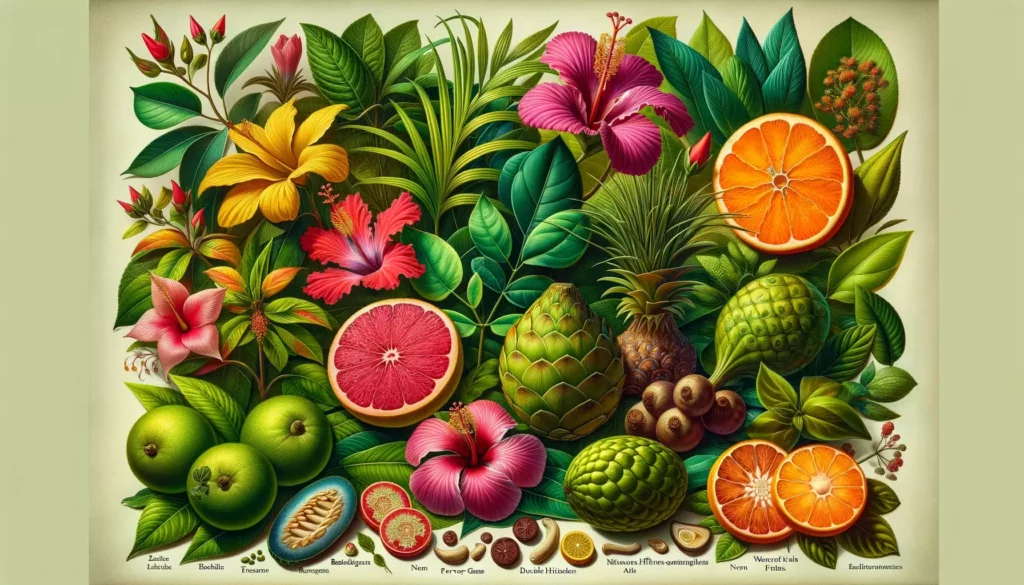Heritage and Practice of Bush Medicine
Caribbean bush medicine, deeply rooted in the cultural heritage of Trinidad and Tobago, is a fascinating blend of traditional plant-based treatments that have stood the test of time. Despite the advances in modern medicine, the practice of bush medicine persists in certain communities, reflecting a rich cultural tradition.
Understanding Bush Medicine
At its core, bush medicine represents the use of various plants known for their healing properties. These plants, found in the wild or grown in gardens, are used to address a range of health issues, from common ailments like colds and coughs to more serious conditions such as kidney stones, diabetes, and even cancer.
Application and History
Bush medicine employs diverse methods, including consuming parts of the plant as hot tea or using them in alcohol-based ointments. This practice is prevalent across many Caribbean islands, like Grenada and the Bahamas, and is often integrated with conventional medical treatments.
The Healing Potential and Research on Bush Medicine
While bush medicine is a part of traditional knowledge, it is important to note that it has received limited research attention. This lack of extensive scientific study means that the safety and effectiveness of these practices are not fully understood. However, emerging research suggests potential benefits, though it’s crucial to consult with healthcare professionals before using herbal remedies.
Trinidad and Tobago’s Rich Bush Medicine Heritage
In Trinidad and Tobago, bush medicine is a result of various cultural influences, including Amerindian, African, European, and Asian Indian traditions. This cultural melting pot has contributed to a unique set of medicinal plants and practices. The concept of hot and cold imbalances, similar to that in traditional Chinese medicine, plays a key role in this practice.
Notable Herbal Plants and Their Uses
The National Herbarium of Trinidad and Tobago documents over 900 single plant remedies, showcasing a vast array of plants with distinct medicinal uses. The rich biodiversity of Trinidad and Tobago offers a treasure trove of medicinal plants, each with its unique properties and uses. Here are some of the notable herbal plants and their traditional applications:
- Zebapique (Neurolaena lobata)
- Uses: Zebapique is widely recognized for its effectiveness in treating fever, common colds, and coughs. The leaves are typically crushed and consumed in juice form or soaked in alcohol to be taken as a small shot.
- Fever Grass (Cymbopogon citratus)
- Uses: Also known as lemongrass, Fever Grass is commonly used to treat fevers and colds. It can be steeped and consumed as a tea, serving both as a remedy and a refreshing drink.
- Barbadine Leaves (Passiflora quadrangularis)
- Uses: A relative of the passion fruit, Barbadine leaves are infused to manage high blood pressure. The Barbadine fruit itself is popular in local culinary applications, like smoothies and ice creams.
- Monkey Apple (Genipa americana)
- Uses: The Monkey Apple is utilized in the treatment of diabetes, either consumed directly as fruit or prepared as a decoction.
- Double Hibiscus (Hibiscus rosa-sinensis)
- Uses: Known for its diuretic effects, Double Hibiscus is used to treat urinary retention. The flowers are made into infusions or decoctions for therapeutic use.
- Neem (Azadirachta indica)
- Uses: The leaves of the Neem tree are chewed raw or made into a juice for treating diabetes. It is also used as a cooling agent in traditional practices.
- Noni (Morinda citrifolia)
- Uses: Known locally as “pain bush,” Noni is used for diabetes management. The juice of the ripe or fermented fruit is consumed for its medicinal properties.
- Wonder-of-the-World (Bryophyllum pinnatum)
- Uses: This plant is considered a cure-all and is used to treat a variety of conditions including asthma, diabetes, kidney stones, high blood pressure, and common colds.
These plants, alongside others, form an integral part of the bush medicine tradition in Trinidad and Tobago. They are not only a testament to the rich cultural heritage but also to the deep knowledge of natural remedies passed down through generations.

Conventional Medicine vs. Bush Medicine
Despite the dominance of conventional medicine, which is based on extensive research and evidence, bush medicine continues to hold therapeutic and cultural value in many communities. The potential for integrating bush medicine with conventional treatments is an area of growing interest, particularly in Trinidad and Tobago.
Concluding Thoughts
In summary, bush medicine in the Caribbean, especially in Trinidad and Tobago, is a complex interweaving of various cultural practices. While it faces challenges due to limited research and recognition by conventional medicine, its potential in treating various conditions is promising. The future may see a greater synergy between these traditional practices and modern medical approaches.
